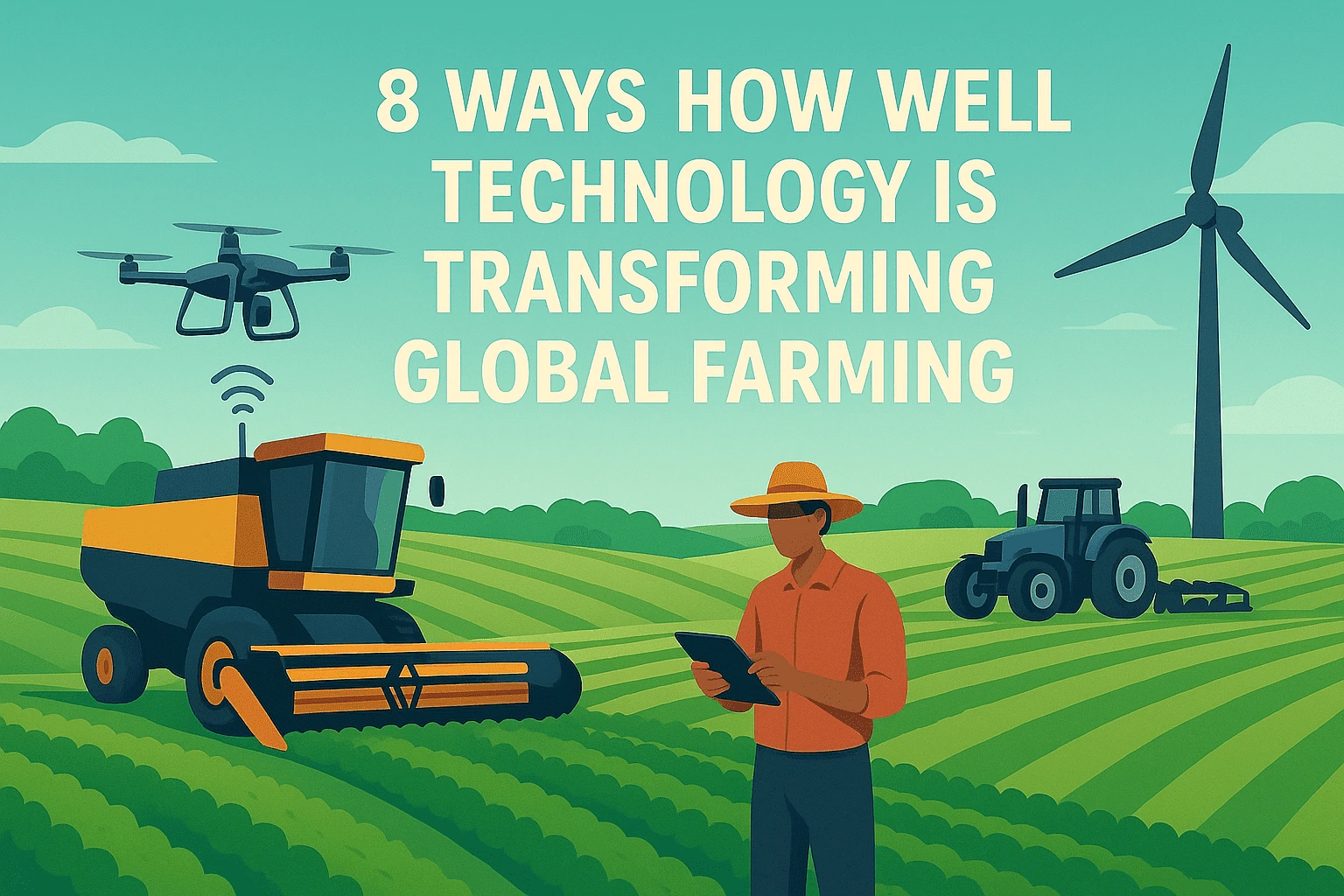Introduction
The world is experiencing a rapid transformation in food and agriculture. With a growing population, climate challenges, and increased demand for sustainable practices, the way we cultivate, distribute, and consume food is evolving faster than ever. Modern agriculture is no longer only about planting seeds and harvesting crops—it is about combining centuries of knowledge with cutting-edge technology to ensure food security for billions of people.
In this article, we will explore the latest innovations in food and agriculture, examine the key global challenges, and highlight opportunities for businesses, exporters, and consumers.
1. The Importance of Agriculture in the Global Economy
Agriculture has always been the backbone of civilization. Today, it remains one of the largest industries, employing more than one billion people worldwide and contributing significantly to global GDP. In many developing countries, agriculture represents the main source of income and food supply.
For nations like Iran, Turkey, and India, agriculture plays a dual role—feeding the population and serving as an export engine. High-demand products such as pistachios, saffron, dried fruits, and nuts have made these countries key players in international trade.
However, global competition and environmental stress mean that traditional farming methods alone cannot meet modern demands. This is where innovation steps in.
2. Key Challenges Facing Food & Agriculture
Before diving into solutions, it’s important to understand the major obstacles:
-
Climate Change: Rising temperatures, unpredictable rainfall, and soil degradation affect crop yields.
-
Water Scarcity: Agriculture uses nearly 70% of freshwater resources, making efficiency crucial.
-
Food Waste: Around one-third of food produced globally is wasted, creating economic and environmental losses.
-
Population Growth: By 2050, the global population will exceed 9.5 billion, increasing demand for food by nearly 60%.
-
Supply Chain Disruptions: The COVID-19 pandemic revealed how fragile global food supply systems can be.
These challenges require smart solutions that balance productivity, sustainability, and resilience.
3. Technology: The Driving Force of Agricultural Transformation
Modern farming is experiencing a digital revolution. Farmers and exporters who adopt new tools can boost productivity and reduce risks. Here are some key technologies:
Precision Agriculture
Using sensors, GPS mapping, and drones, farmers can monitor soil quality, crop health, and irrigation needs. This minimizes waste and maximizes yields.
Artificial Intelligence (AI) & Big Data
AI-driven platforms predict weather patterns, optimize planting schedules, and even detect early signs of plant disease.
Blockchain in Agriculture
Blockchain technology is increasingly used for traceability. Consumers in Europe or Asia want to know exactly where their pistachios, dates, or saffron come from. Blockchain ensures authenticity and builds trust in export markets.
Smart Irrigation & Water Management
With water scarcity on the rise, efficient irrigation systems (like drip technology) help farmers conserve resources while maintaining crop quality.
Sustainable Packaging & Logistics
Eco-friendly packaging and AI-driven logistics reduce waste during export and strengthen brand reputation.
4. Sustainability: The Heart of the Future
Sustainability is no longer just a trend—it’s a necessity. Governments, businesses, and consumers demand practices that protect the planet. Key strategies include:
-
Organic Farming: Growing without harmful chemicals appeals to health-conscious consumers.
-
Regenerative Agriculture: Practices like crop rotation and soil enrichment restore ecosystems.
-
Reducing Carbon Footprints: Exporters who measure and offset emissions gain a competitive advantage.
-
Circular Economy: Reusing agricultural by-products (e.g., nut shells for energy production) reduces waste.
5. The Role of Exporting in Agricultural Growth
For companies like Sobhan Food, exporting agricultural products creates opportunities beyond borders. Iran, for instance, is known for pistachios, saffron, dried fruits, and nuts—products that have centuries of heritage and demand in international markets.
By combining traditional knowledge with modern marketing and certification, exporters can increase their competitiveness. Certifications such as ISO, HACCP, and Organic Labels are becoming essential for entering premium markets like the EU.
E-commerce platforms and digital trade fairs also make it easier for agricultural exporters to connect with global buyers without physical limitations.
6. Consumer Trends Shaping the Market
The global consumer is evolving, and businesses must adapt. Some of the biggest trends include:
-
Health & Wellness: Rising demand for plant-based foods, nuts, and natural sweeteners.
-
Transparency: Consumers want to know the source of their food—origin, farming methods, and certifications.
-
Convenience: Ready-to-eat snacks, dried fruits, and innovative packaging formats are growing rapidly.
-
Cultural Fusion: Recipes that mix traditional foods (like Iranian pistachios or dates) with modern cuisine are becoming more popular.
7. Opportunities for Businesses and Farmers
Agriculture is no longer limited to the farm. Today, opportunities extend into:
-
Agri-Tech Startups: Developing apps, drones, and IoT devices for farmers.
-
Export Branding: Building trust with global buyers through transparency and certifications.
-
Value-Added Products: Instead of exporting raw nuts, producing nut butter, dried fruit snacks, or saffron-infused teas increases profitability.
-
Educational Content: Businesses that educate consumers about the benefits of their products build stronger brand loyalty.
8. Conclusion: The Future is Smart, Sustainable, and Global
The future of food and agriculture lies at the intersection of knowledge, technology, and sustainability. Farmers, exporters, and consumers all have roles to play in creating a food system that is productive, fair, and environmentally friendly.
For companies like Sobhan Food, the opportunity is clear: by combining Iran’s rich agricultural heritage with modern technology and global standards, the path toward leadership in international markets is wide open.
Agriculture is not just about feeding people—it’s about building trust, supporting economies, and securing a sustainable future.




